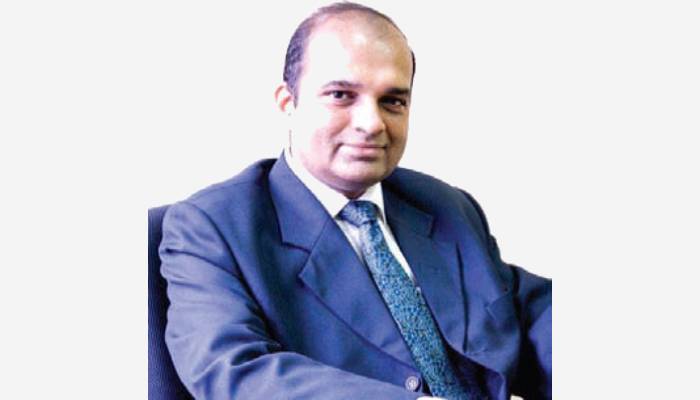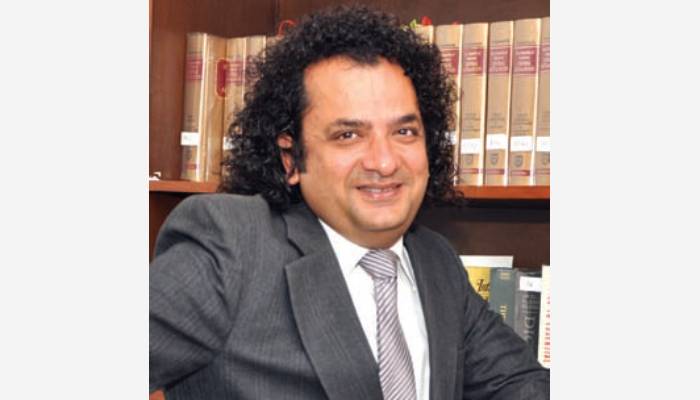
or

With Galleon group’s Raj Rajratnam already behind bars and Rajat Gupta awaiting his turn, the modus operandi of the culprits of insider trading and the nabbing thereof by the enforcement agencies is wide in the open. ‘InDepth’ in this Issue takes a look at Indian Legal Framework on the Issue of tackling the menace
Discovery of massive frauds in the Indian and International capital markets has forced the regulators and legislatures to standardize the corporate governance and impose stiffer penalties on violation of these governance guidelines. Insider trading is an area with an immense scope for such frauds.The question before the Corporate is how balanced and effective are the steps taken to curb this menace and how effective the internal control systems are to curb this issues?
The basic concept of insider trading is the usage of available unpublished pricesensitive information about a listed company for trading in the stocks for personal gains which would not have been possible otherwise and which amounts to unethical betrayal of fiduciary position of trust and confidence within the purview of Insider Trading.
In India SEBI Prohibition of Insider Trading Regulations (as amended from time to time) isa comprehensive and self-contained legislation on the issue which regulates the insider trading in Listed Companies. Widely the person who are covered under the purview of this Regulations are person getting such unpublished price- sensitive information due to their close association with the company either as top management or employees; persons associated with the company in their professional capacities as lawyers etc and persons not falling in above categories but have come in possession of price-sensitive information.
The definition of ‘insider’ as per the regulation is wide enough to cover any person who is or was connected with the company or is deemed to have been connected with the company, and who is reasonably expected to have access to unpublished price sensitive information in respect of securities of the company, or who has received or has had access to such unpublished price sensitive information. Various amendments were brought into the regulations to make it more stringent by including any person connected in the above capacity “six months prior to an act of insider trading”, covering ‘temporary insiders’ who may be professionals like lawyers, accountants, investment bankers etc.
The New Regulations have added relatives of connected persons, as well as, the companies, firms, trust, etc.in which relatives of connected persons, bankers of the company and of persons deemed to be connected persons hold more than 10% stakes. The definition of relative under the new regulations is in line with that of the Companies Act, 1956, Thus, the new regulations has actually categorized insiders into –first who are directly connected with the company and the second who are deemed connected due to having their access to unpublished pricesensitive information.
The jurisprudential basis for the ‘person connected’ approach is apparently founded in the equitable notions of fiduciary duty which denotes that person holding a fiduciary position should not use the information unethically for its own advantage which otherwise he could not had if the information was not available.
The practical difficulty occurs for the prosecution to prove the existence of a ‘connection’ where the deemed connected insider has been dealing and using the information to its advantage. This provides an escape to deemed connected insider who may escape simply because the prosecution fails to prove how the deemed connected insider actually derived the information due to his connection with the company.
In practical world, the flow of the price sensitive information does not generally take place through formal communication channels between the individuals. In reality the information which is price sensitive flows through informal channels and networks like that of stock brokers, contractors, clients etc. These individuals may be having a close nexus with strategic policy making or developments which influence the market value of a company’s shares in the stock market.
The test, therefore, should be whether there is trading by a person while in possession of undisclosed price-sensitive information, irrespective of his connection with the company. In other words, we should follow the “information connection” approach rather than the “person connection” approach.

SEBI has put in place the regulatory framework which is backed up by surveillance mechanism. The success of this twin tools depends on ability of the regulator to create a deterrent. SEBI has been regularly tracking down irregular stock price movements in scrip and taking it to its logical conclusion. Wherever, a need is felt to take corrective regulatory measures SEBI has amended the regulations to arm itself with additional powers for prevention of Insider Trading. One can always hope that with the determination shown by both, the Government and SEBI a person engaging in Insider Trading cannot hope to escape from the long arm of the law.
Talking about the cases on Insider Trading, SEBI’s charge against Hindustan Unileverand its five Directors is still on. HUL( then HLL) purchased a considerable percentage of Brooke Bond Lipton shares from UTI, before making a public announcement related to the merger of HUL’s two subsidiaries. SEBI considered it to be a price sensitive information. Being the first case SEBI actually passed an order on Insider directing HUL to compensate UTI to the extent of Rs 3.04 crore. HUL moved to the appellate authority, the finance ministry filing appeal against order of SEBI, which was decided in favor of HUL. SEBI filed an appeal in the Bombay HC and the final verdict is yet to be pronounced.
SEBI in another case of Dilip Pendse, former MD of Tata Finance, held Dilip guilty of insider trading alleging him to have helped former director of a subsidiary of Tata Finance in offloading a large lot of NBFC’s shares at a premium, prior to the public announcement of Nishkalp’s huge loss. The order of SEBI was challenged before SAT, which set aside the regulator’s order. SEBI later approached the SC, The final verdict is yet to come in this case too.

The regulatory focus, while dealing with the menace of Insider Trading, must be to curb any potentiality for market abuse by an ‘Insider’. And the definition of the ‘Insider’ must include not only those who are in possession of price sensitive information but also those who by virtue of any collusion/arrangement with the board of a company to manipulate the trading volumes of a stock or those who by virtue of their dominant position due to control over the stock can manipulate the trade by engaging in circular trading. So in a nutshell façade of any nature which is capable of causing wrongful loss to the investor and wrongful gain to the ‘Insiders’
The SEBI is under obligation for facilitating the development of the market and protection of the investors but the regulatory focus seems to be focused more on other abusive practices like collective investment schemes rather than insider trading.
The three most potent means of preventing market abuse are surveillance by the regulator, reporting by the market participants to the regulator and complaints thereto by anybody. The ‘Insider’ will be entrapped into the regulator’s net only when the surveillance and reporting mechanism are robust which must include a watch over the entire ecosystem of the market including stock exchanges, participant companies, depositories etc.
The challenge of the hour is in identifying the person involved in corporate actions like M & A, Banking etc. and try to put more restrictions so that they are not engaged in trading activities for the shares of the Company, however challenge remains for surveillance of those connected persons continuously. Banks, Hedge Funds and Asset Managers are expected to take more proactive actions in this direction. Prevention of Insider Trading should be on the list of important agendas in Board of Corporate. The monitoring, identifying and remediation process should be strongly developed so as to take preventive controls as a first measure. A statement should be mandated in the annual report of the degree of compliance with those specified procedures. Introduction of corporate governance ratings, similar to debt ratings would also pressurise the management to comply with such measures.
Jyotsna, is Principal Associate with Maheshwari & Co., Delhi

Lex Witness Bureau

Lex Witness Bureau

Lex Witness Bureau

For over 10 years, since its inception in 2009 as a monthly, Lex Witness has become India’s most credible platform for the legal luminaries to opine, comment and share their views. more...
Connect Us:


The Grand Masters - A Corporate Counsel Legal Best Practices Summit Series
www.grandmasters.in | 8 Years & Counting
The Real Estate & Construction Legal Summit
www.rcls.in | 8 Years & Counting
The Information Technology Legal Summit
www.itlegalsummit.com | 8 Years & Counting
The Banking & Finance Legal Summit
www.bfls.in | 8 Years & Counting
The Media, Advertising and Entertainment Legal Summit
www.maels.in | 8 Years & Counting
The Pharma Legal & Compliance Summit
www.plcs.co.in | 8 Years & Counting
We at Lex Witness strategically assist firms in reaching out to the relevant audience sets through various knowledge sharing initiatives. Here are some more info decks for you to know us better.
Copyright © 2020 Lex Witness - India's 1st Magazine on Legal & Corporate Affairs Rights of Admission Reserved